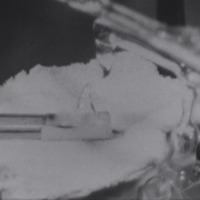| Description |
A few years ago history was made at the United States Atomic Energy Commission’s Argonne National Laboratory where this program was filmed. This is the story of the dedicated research scientists whose search for truth ended a fallacy in chemistry which had existed for more than half a century. Although their efforts were not as exciting as the discovery that the world was round and not flat, the scientists at Argonne disproved that a group of elements called “inert gases” would not react with other elements to form compounds. This is not to imply that these elements – helium, neon, argon, krypton, xenon, and radon – did not have utility. Helium is the gas used to send balloons aloft. Neon, argon, and krypton are used in light bulbs: xenon in high speed photographic cells; and radon in medical therapy to irradiate cancer cells. What the Argonne scientists investigated was the atomic structure of these elements. For years it had been falsely believed that the electrons within these elements could not combine with electrons within the atoms of other elements. Following a report of Canadian scientists, the researchers at Argonne found that, instead of picking up electrons from other atoms, some of these so-called “inert gases” actually gave up electrons when combined with other elements. Using Krypton, xenon, and radon, in separate experiments, the Argonne scientists succeeded in making compounds which previously were unheard of. In fact, they also found at least one xenon compound for which they weren’t looking. This was xenon trioxide, a powerful explosive, made from xenon and oxygen. Many new uses will doubtless be found for these new compounds, according to the scientists. One might be the use of xenon tetrafluoride to store large quantities of fluorine as an oxidizing agent in rocket fuel.
|

